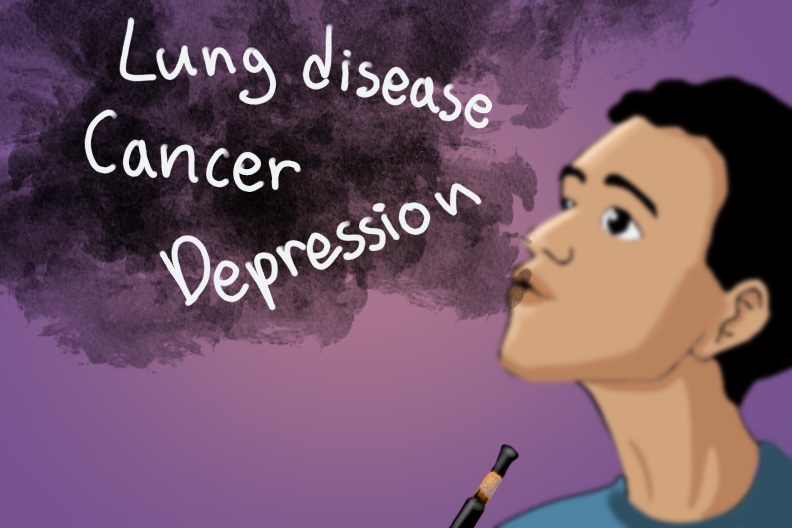When cannabis cartridge device users inhale from their device, they are inhaling all of the heavy metals that have seeped into the cartridge.
Many cannabis cartridge devices are made with metals which leach into the concentrated cannabis oils, meaning these devices cause a lot more lung damage than smoking a cannabis flower, said Carrie Cuttler, associate professor in the Department of Psychology at Washington State University.
“The concentrates are associated with way more lung damage than even smoking a joint, for example,” Cuttler said.
According to Erika Westling, research scientist at the Oregon Research Institute, exposure to THC on the developing brain can cause permanent brain structural differences compared to a brain before the age of 26 that has not been exposed to THC.
“Primarily, that [exposure] affects attention, memory,short-term memory [and] ability to perform well on cognitive tasks,” Westling said.
According to Tory Spindle, associate professor of psychiatry and behavioral sciences at Johns Hopkins University, legalized cannabis is very unregulated.
“It’s not like going to CVS and getting a prescription and you’re getting a medication, you know exactly what that medication is, it’s going to be exactly the dose,” said Spindle.“There is no oversight to make sure that what you’re getting is actually what’s on the label, and oftentimes [a cartridge] contains other stuff that is not reported on the label. And the dosing may be inaccurate. You might get exposed to pesticides, heavy metals, all kinds of other stuff.”
According to Westling, the prevalence or density of cannabis outlets around schools is changing kids’ attitudes towards cannabis.
Young people are seeing it as less risky without really knowing the full facts about brain development and the impact it can have when users start to use it at a young age, Westling said.
“There’s a lot of research done on how exposure to THC [at] younger ages is linked to psychosis in your 20s or even developing schizophrenia,” Westling said.
If children or early adolescents go beyond experimentation to regular use, they are much more likely to develop a cannabis use disorder when they are older and use other substances because their brains and their bodies have gotten used to feeling intoxicated, Westling said.
A cannabis cartridge device is used to inhale cannabis. It consists of a small cartridge filled with an extract of cannabis concentrate, which is a more potent form of cannabis compared to the cannabis flower.
“[Cannabis] is usually dissolved in some kind of liquid that allows for the THC to be basically suspended, and then there’s a coil that is heated,” Spindle said.
The liquid in cannabis and nicotine cartridges may contain a variety of ingredients, additives and carcinogenic chemicals.
Damage done to lungs from consistent cannabis cartridge use is permanent, while the impact on memory is temporary, Cuttler said.
“When people use cannabis regularly, their memory and test performance will be worse even when they are sober … but none of this is irreversible,” said Cuttler. “If people stop using cannabis for about 30 days, those impairments go away and their endocannabinoid system goes back to normal, so it’s not permanent damage that people are doing.”


